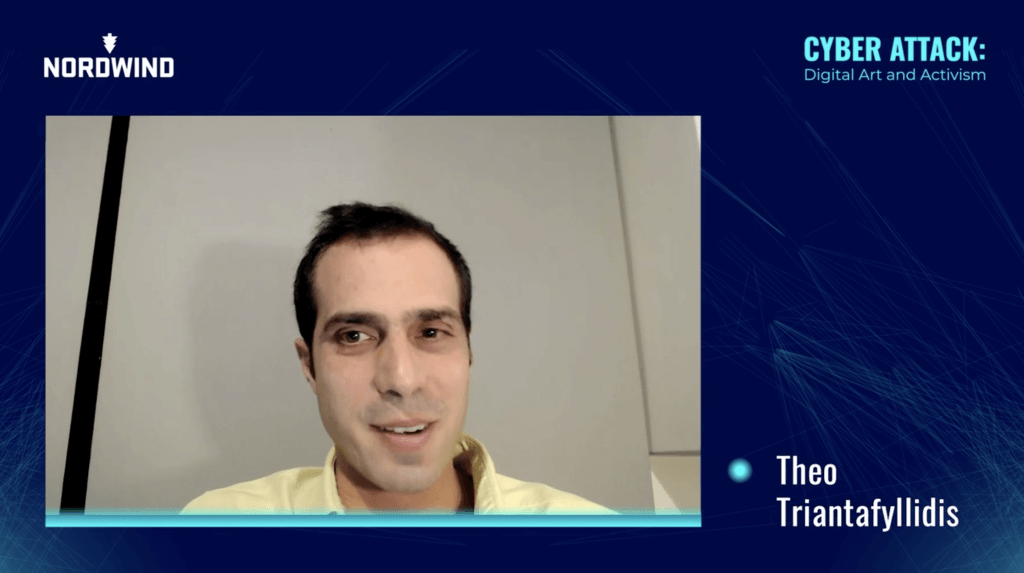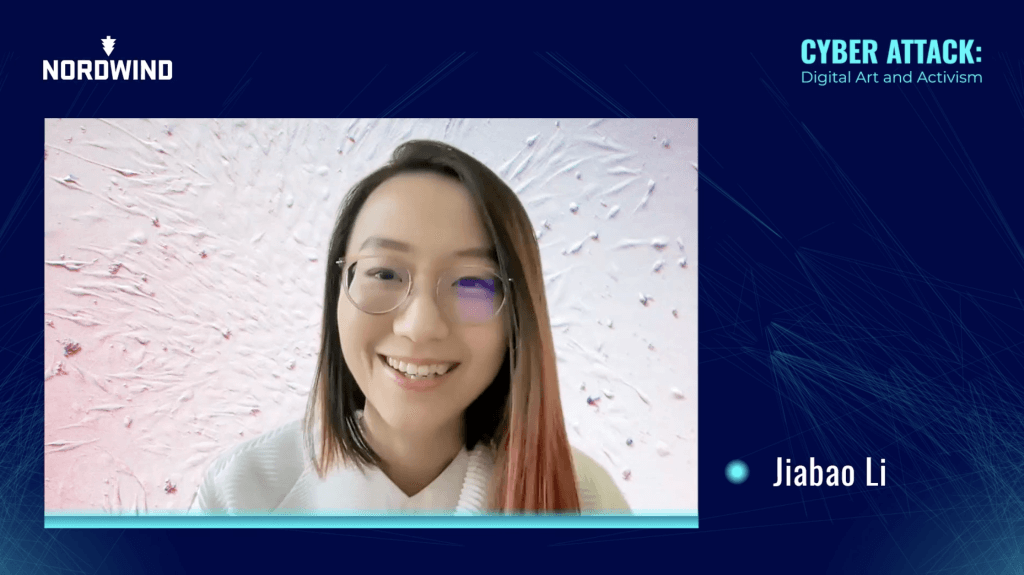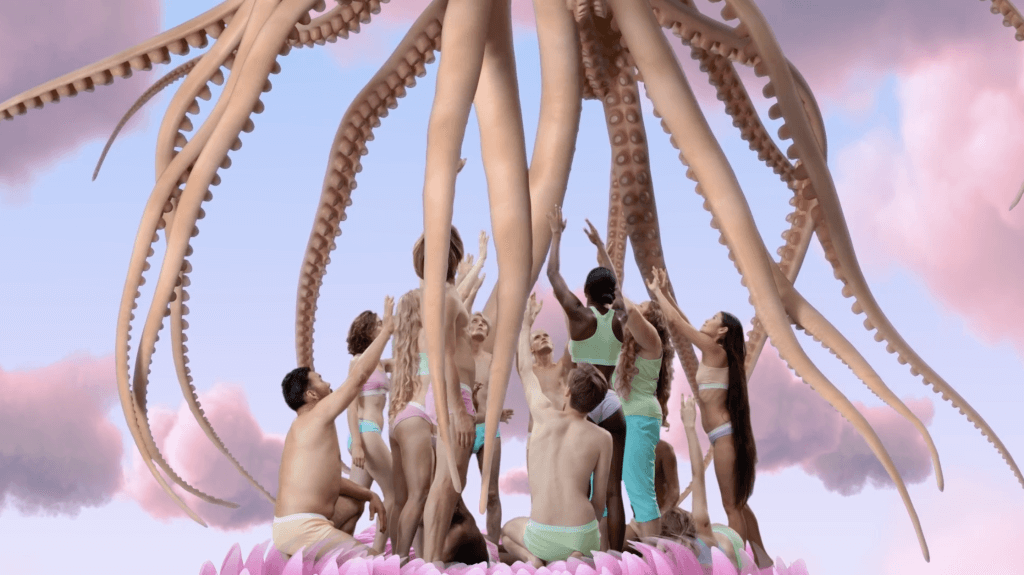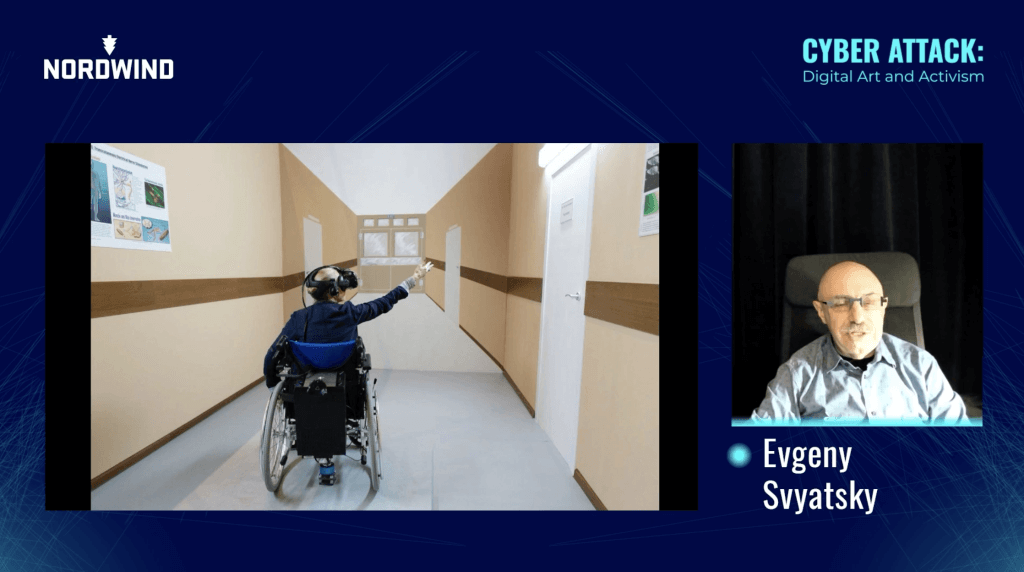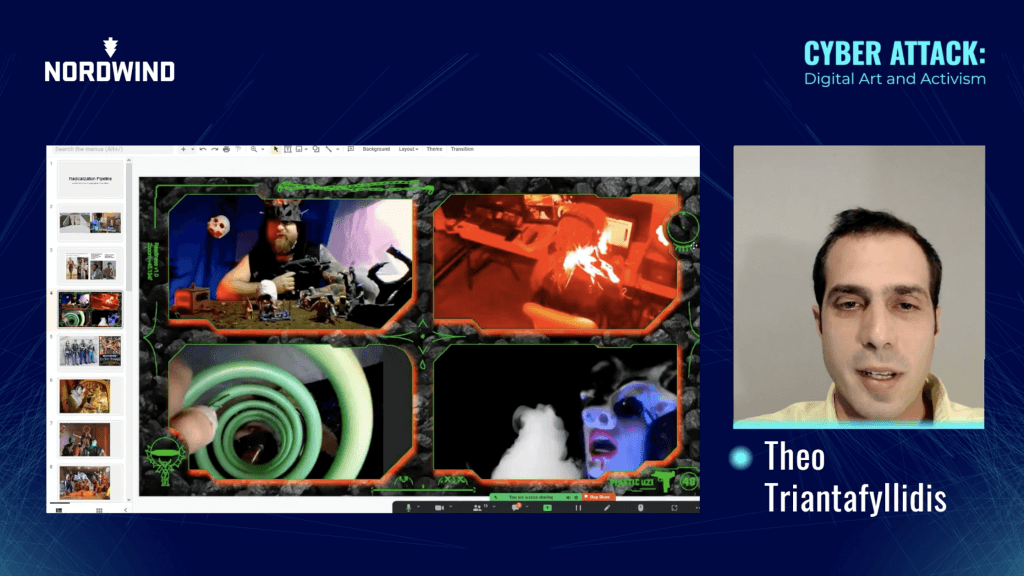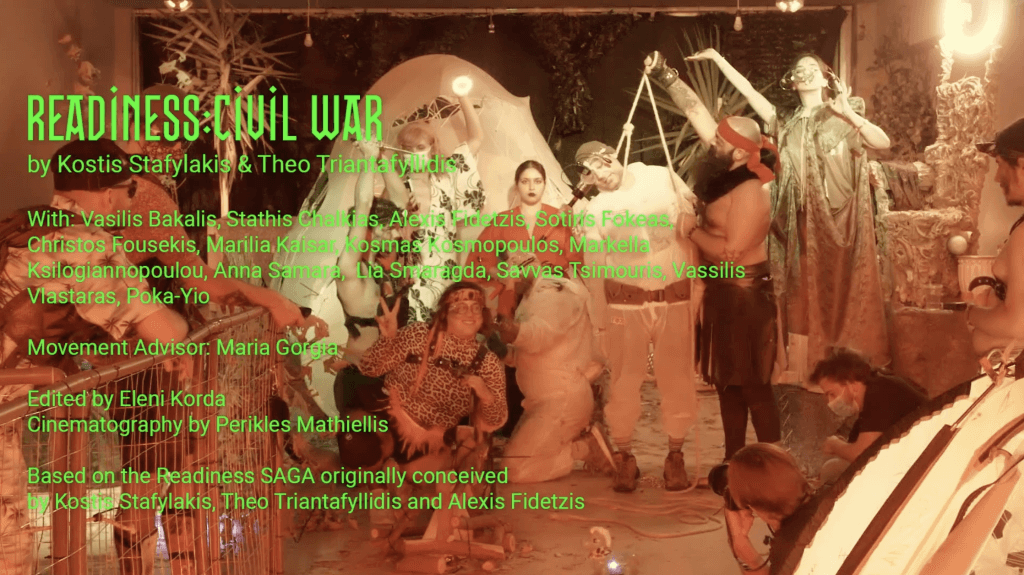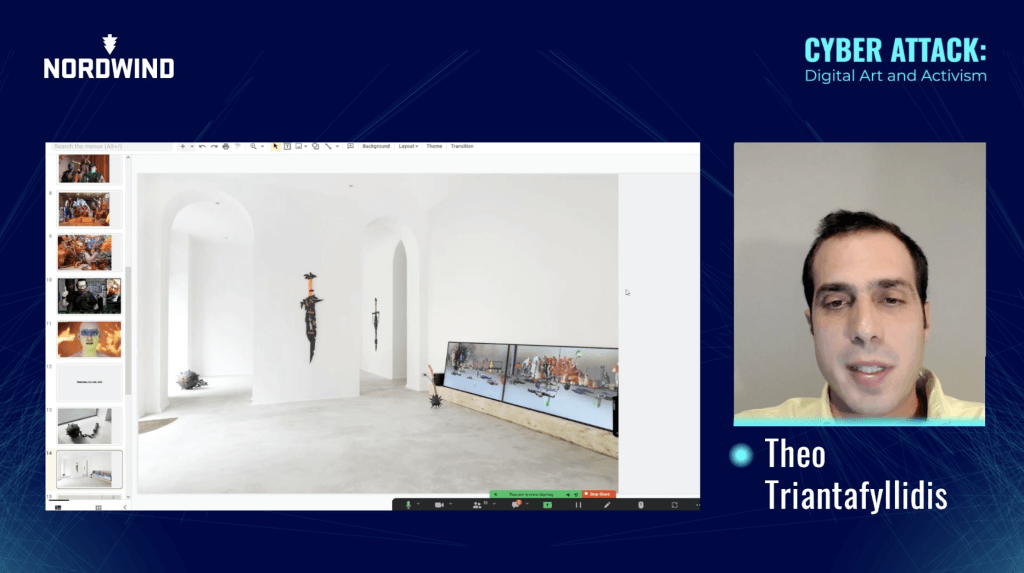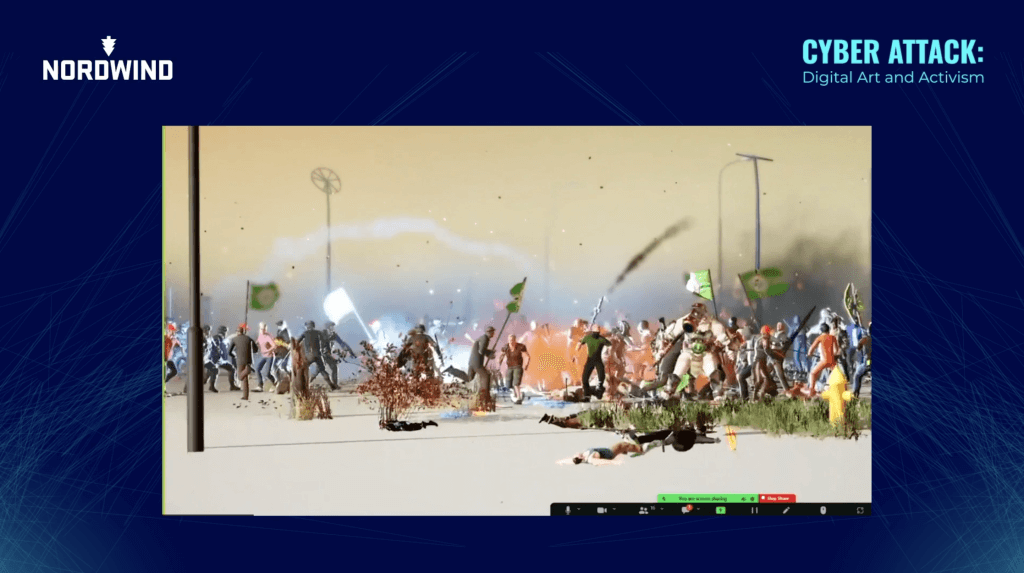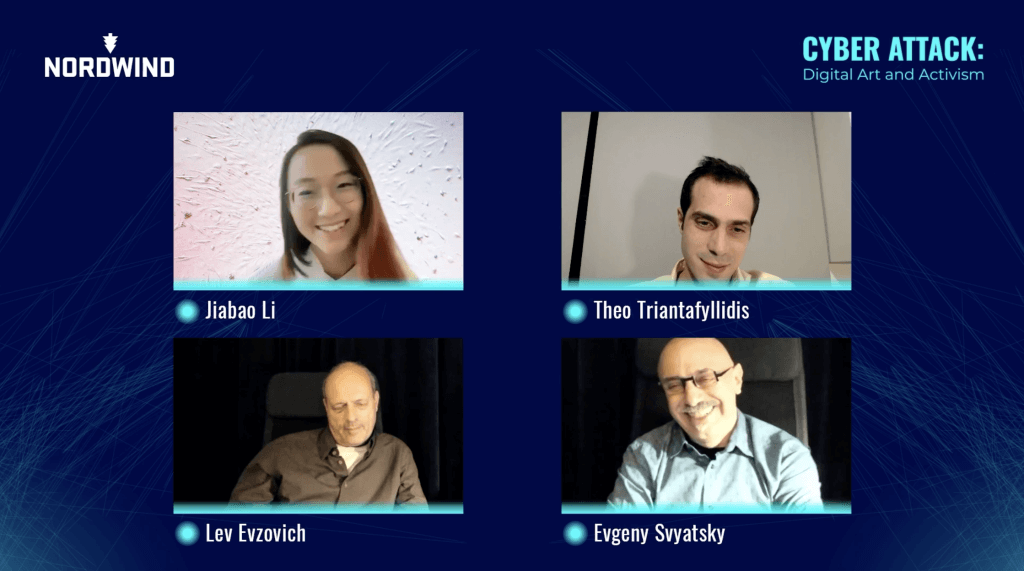In mid-November 2022, the conference CYBER ATTACK: Digital Art and Activism was held online over three days to discuss the relationship between digital art and contemporary society.
In this article, we will review one of the many sessions held: in particular, we focus on one which explores the theme of self-expression pursued through extended reality (XR) and other technologies.
This conference is a must-see for anyone who is interested in the relationship between digital art and social activism.
CYBER ATTACK: Digital Art and Activism
In the last decade digital technologies have ushered in a proliferation of hybrid artistic practices, media forms, and discourses across communities all over the world. These technologies have not only shifted the ways audiences experience art in public spaces, they have enabled artists to expand and connect directly to their audiences, collaborate virtually, and interact remotely. The current global pandemic and the dangerously expanding warfare between Russia and Ukraine make understanding these shifts even more critical, as the opportunities for artistic production are continuously threatened by restrictions on public gatherings, new forms of surveillance and censorship are increasingly deployed by autocratic regimes, forced migration due to conflict and violence has devastated entire artistic communities, and an information war has left us all more fragmented than when the twenty-first century began. Cyber Attack: Digital Art and Activism investigates how and under what conditions artists are deploying technologies and online spaces to build impactful narratives and actions that respond to accelerating political, economic, and environmental crises, while forging new communities and alliances.
—Via the official event website
Through many discussions, presentations, and performances, CYBER ATTACK gave us the opportunity to deepen our knowledge of how media art is being used in contemporary society, and how we should respond to it.
XR Technology and New Directions in Physical Performance and Media
Throughout the three-day conference, there were many presentations such as “Digital Nomadism and Virtual Production” and “Blockchain technology and NFTs: the new art market, its history, misconceptions and opportunities.”
This article will focus on the session “XR Technology and New Directions in Physical Performance and Media.” In this session, the speakers (all of whom are artists) discuss the aesthetic and political aspects of their work and their application of technology.
Speakers
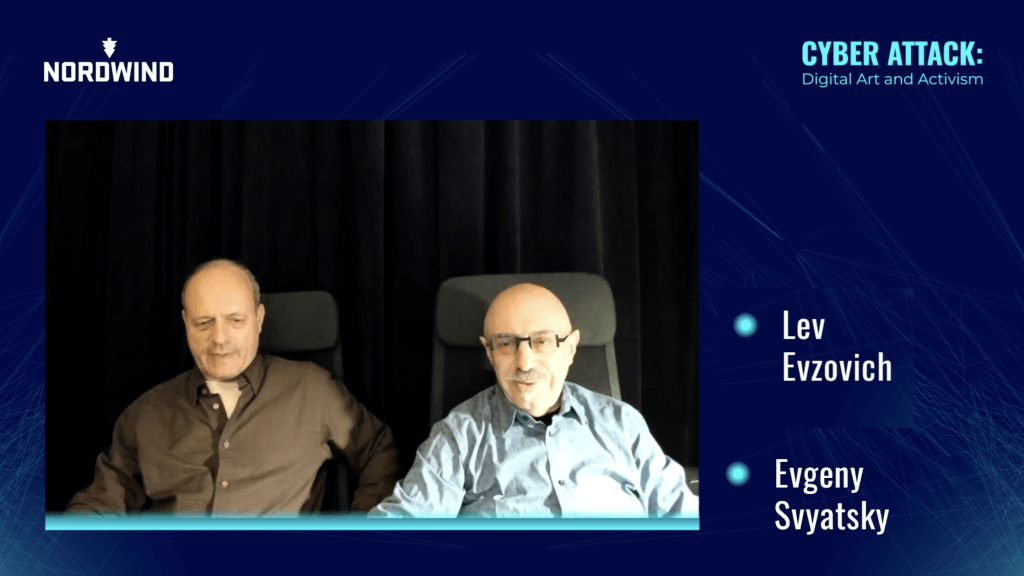
Lev Evzovich and Evgeny Svyatsky (AES+F)
Moderator
Works by Lev Evzovich and Evgeny Svyatsky (AES+F)
TURANDOT(2070) (2019)
First, panelists Lev Evzovich and Evgeny Svyatsky presented the trailer for TURANDOT(2070).
This video work was created in 2019 by their collective AES+F.
Based on Giacomo Puccini’s opera Turandot, first performed in 1926, TURANDOT(2070) is about Princess Turandot taking revenge for a forced marriage, and reflects a utopia envisioned by current grotesque totalitarian societies.
Through the story of Princess Turnadot, the pastel hues of the images, and the futuristic cityscape, the artists question our awareness of various social issues in the modern world we live in.
TURANDOT(2070) transforms the original Puccini opera into a 3D and VR work with a new storyline.
This new production has also become a stage production, and has had a strong impact in the many places it has been performed.
Psychosis (2018)
Next, Evzovich and Svyatsky introduce Psychosis, a mixed reality (MR) installation work created in 2018.
Psychosis is based on the text 4:48 Psychosis written by the cult British playwright Sarah Kane in a psychiatric clinic in early 1999, shortly before her suicide.
The installation work was created with an interest in returning to 90s interpretations of the themes of physicality, psychedelics, and social protest.
The poetics of the video oscillate between fairytale-esque and terrifying, and scenes are filled with images of the female body, blood, black snow, psychedelic colors, and cockroaches.

Screenshot from Psychosis

Screenshot from Psychosis
This work was presented in a format that could be experienced in MR within a physical hospital set.
In 2016, the work was also presented in theatrical form as a collaborative project between AES+F and the director Alexander Zeldovich.
The 3D animated video was created first, and the music by Dmitry Kourliandski was added subsequently; together both subsequently were further transformed into a stage and installation pieces
Evzovich states that the two works they introduced – TURANDOT(2070) and Psychosis – are examples of how various technologies can change the ways of expression.
Works by Theo Triantafyllidis
The next speaker was Theo Triantafyllidis, a Greek artist raised between Los Angeles and Athens.
He first introduced Readiness, a collaborative project with fellow Greek artist Kostis Stafylakis.
Triantafyllidis explained that Readiness focused on the COVID-19 pandemic, observing “preppers” who believed in and prepared for the apocalypse, and the political ideology associated with it.
During the pandemic, he continued to explore how COVID changed our day-to-day lives and physical well-being. As an output of his observations, he created a live-stream performance with artists from various cities.
In the series of interactive live-streams, the audience could see what the artists were doing in their impromptu costumes and sets, and could also post comments in the YouTube chat.
Other performances in the Readiness series included a performance based on the escalating American extremist movement “boogaloo,” and an improvisation where ten people develop character ideas on the theme of a live-action RPG game over a period of three days.
All of these ideas were also live-streamed, with the audience participating through the chat as well.
The final chapter of the Readiness saga, “MUTANTS OF READINESS,” featured Joshua Citarella, another speaker at this conference.
Triantafyllidis was in Greece at the time of the pandemic. He describes his experience as follows:
This was a really jarring moment, because we saw a lot of fringe groups and ideologies that were slowly boiling on the internet and on the streets, come together in support of the Trump election claims and escalating into a very bizarre event.
Also, [I was] looking at the type of carnivalesque decisions on how they were dressed, how they were streaming themselves, how they didn’t have any reason to protect their identities, and the sort of things that they did when they entered the capital. I [tried] to process this information and my reaction was to start working on a piece called the “Radicalization Pipeline.”
After Readiness, Triantafyllidis started working on the Radicalization Pipeline.
He stated that Facebook feeds and YouTube recommendations have been optimized to give more and more extreme content once they have some hints about what one is looking for. He noted that this phenomenon has been researched scientifically in-depth, and has been proven to generally lead to the blossoming of extremist ideologies.
Radicalization Pipeline features 3D animations as well as a display of weapons created in ceramics based on the ideas and shapes of the weapons in the game.
The animations were created using large, cloud-driven simulations and show various real-life and fantastical characters fighting each other.
Panel Discussion
Through the work of two artists, we are shown how technology has been utilized to create live performances.
Moderator Li asked the speakers to explain how they work across mediums, and how XR and technology influence their production.
A “Reality” Created inside Photoshop
In 1996, AES+F started the collage Islamic Project, which was one of the first experiments in Photoshop.
Evzovich: In that time, Photoshop was [seen] as a reality. Now people don’t believe in the documentary nature of photography or functional documentation. But at that time, people still believed that photography was a shooting of reality. And so in our project, we combined and Photoshopped the realities of the Western and Islamic wars. People were shocked [to see these pictures] because they still thought that they could be real. And [from there,] we started to work with video, performance documentaries and multimedia.
Svyatsky: In the mid-90s, we also tried for the time to work with 3D computer graphics. It was a project modeling the Berlin wall. In that time it was only possible [to make 3D models] using special computers, so we built a model of the Berlin wall from glass, with barbed wire replaced with neon, a spiral on the top, and golden stars on the neon spiral. That was our first experience with 3D graphics. So it was all together—starting to use Photoshop for manipulating images, starting to try 3D graphics—step by step—and after 2000, we came to the position to mix [media].
Moreover, they mentioned that they still make paintings and sculptures.
Evzovich: Sometimes we create images in virtual reality, and then we build it in reality.
Svyatsky: We make 3D models on the computer, and then they’re produced as real objects (sculptures).
Creating Hybrid Environments
Having a background in architecture, Triantafyllidis worked as an architect for a few years after graduating.But after being introduced to an online community of internet/post-internet art, he enrolled in UCLA to study media art.
Triantafyllidis: I went to LA to study at UCLA and I was introduced to the game engine as a creative tool—that was a very important moment for me because it put together all the types of things I wanted to do. Being able to [create] a real time environment, performing live and changing things in there, creating worlds and bringing them to life was a very exhilarating moment for me.
I’m also really interested in this hybridity and having artistic ideas that are both expressed in digital media but also in physical—bringing them back and forth, seeing how these ideas can mutate and what comes out of this process.
Nationalities and Global Identities
There was further discussion on various related topics. For the final question, Li asked the speakers to talk about how their work reflects their personal origins.
Evzovich: The beginning of the 90s had been really important for us. In one sense it was very dramatic because of all the processes(protests?) happening in the world—liberal capitalism, globalism, new technologies—everything came to Russia, and Russia became to be a kind of “grotesque” of all of these world events. [With this, we were able to understand] what was really interesting for us.
Of course we have Russian origins, but experiencing the 90s which was “grotesque” to world processes, became our basement of our concepts and aesthetics, where we really started to use the language of advertising, video games, and so on.
Svyatsky: In our case, Russia is a multi-nationalistic country, so it’s a bit more complicated.
[…] We’re never worried about this because it’s just part of our personalities, and part of our culture. We just work on the subjects that we are most interested in, and consider [the subjects] to be more common for the world, and to be understood by any audience, everywhere—which concerns Russia, as well as any other nation. This for us is more interesting and important.
Triantafyllidis: For me, it’s similar. I don’t think much about “Greekness” as an idea or something that explicitly needs to be expressed in the work.
I think that whether I like it or not, there’s definitely some kind of subliminal influence, but I really consider the international audience, and I like to [address] more general subject matters. Also, for Greece, there’s a heavy load of history and it’s very hard to define a contemporary culture in Greece that is detached from the past.
Watch the Archive Video
The conference already ended but the full archive video is available to watch from the link below:
https://cyberattack.vhx.tv/products/cyber-attack-conference
The video is available in English, with German, Ukrainian and Russian summaries.
Edited by SASAnishiki
Translated by cpnnn
